Etching An etching is usually produced on a metallic plate that is sensitive to acid. The plate is first covered in a material that will protect the plate against the acid, and then parts of that cover are removed with a metal stylus. The plate is then etched in a shallow bath, the acid is washed off and the protective covering is also removed.
To print, it is most common to work black printing ink into the etched grooves and then wipe clean the smooth metal surface (although leaving a little of the ink on the surface creates its own effect, and guarantees that no two prints will be exactly the same). The plate is laid on art paper and together these are rolled through a press, a process that transfers the ink to the paper.
It is possible to create a multi-colored print through the use of several plates, or by successively re-etching the same plate, or even by putting different colored inks in appropriate areas of the plate in a single printing - most of which Carl tried in this period.
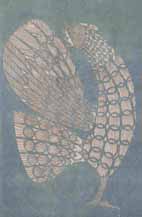
Grouse
|

1969 Christmas Card
|
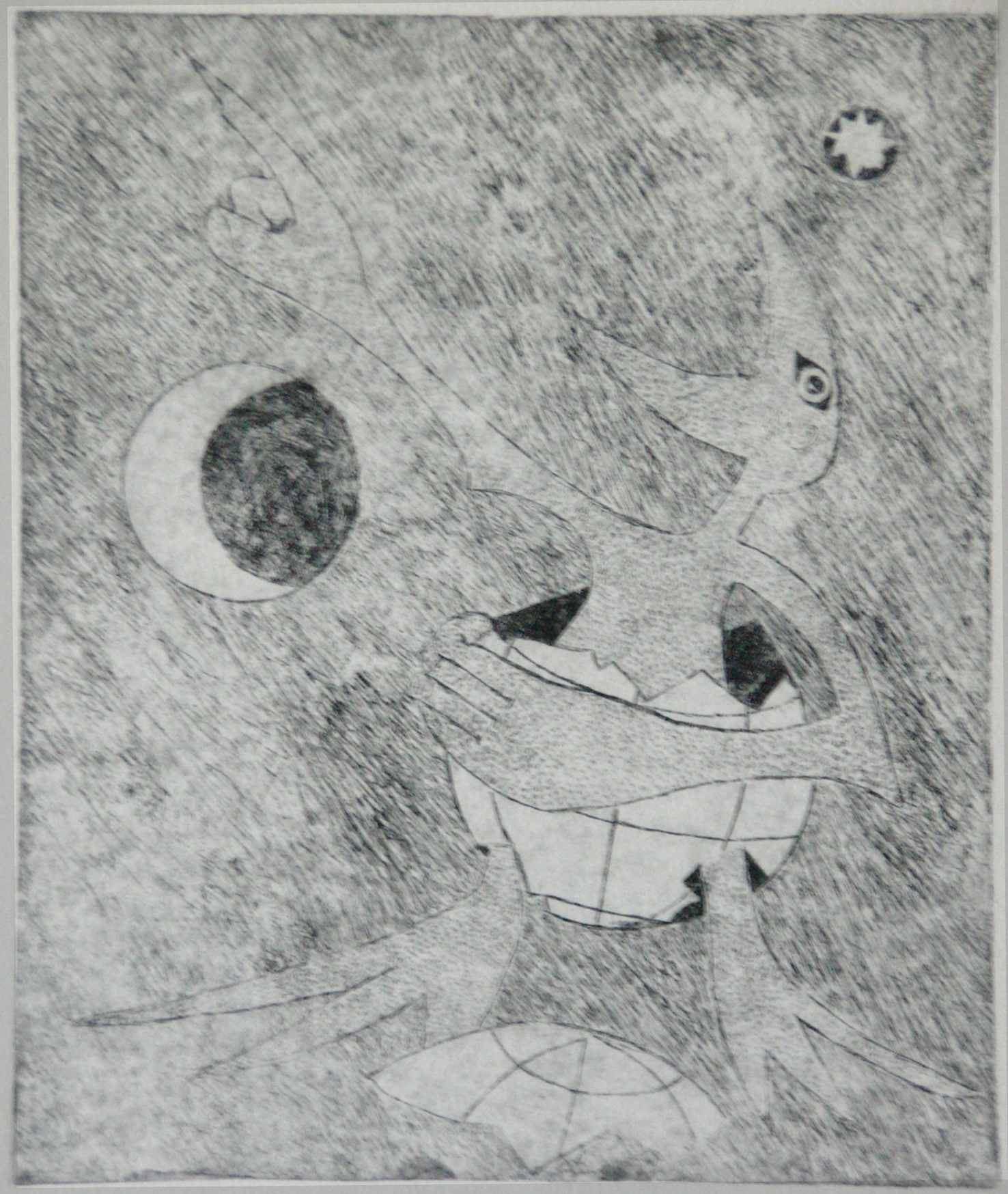
Cosmic Fantasy
|

Dissent
|
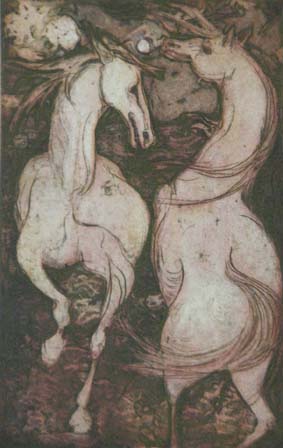
Wild Horses
|

Sumo Wrestlers
|

Swordfish
|
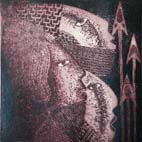
Warriors
|
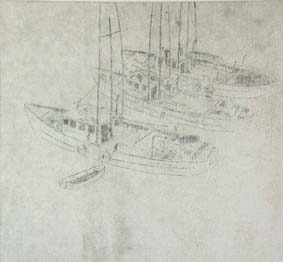
Coastal Seiners
|
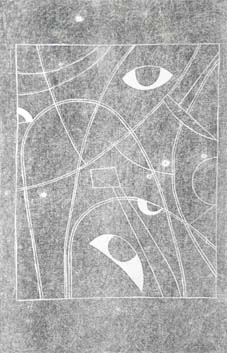
Undated abstract
|
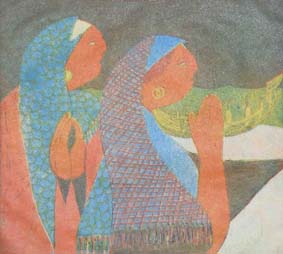
Greek Women
|
Drypoint The printing method is similar to etching, but there is no use of acid and no need therefore to cover the plate with protective ground. The drawing is scratched directly into the metal plate with a sharp metal point.
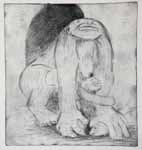
Ape Mother with Child and Fish
|

Man Embracing Son
|
Woodblock These can be made without special equipment, unlike an etching or a drypoint: ink is rolled on the carved block, then paper is laid on it and rubbed from behind to let the ink transfer. For this reason, Carl was able to produce more substantial series of these.
Wood blocks are made reasonably level along one surface, and the parts that are to remain white are carved away. Naturally, the grain can play a role in the final product. Japanese masters often produced one block and applied various coloured inks by hand, but it is more common to produce one block for each colour. Note, however, that several of these pieces were printed in several colours from a single block: in this case more surface wood is removed at each stage; in Trout Dance, for example, first the background colour, then the red of the trout and finally the black were printed from a single block of spruce.
Carl liked to carve wood as a boy, and continued to practice the art of carving to the end of his life, as other areas of this site will attest, so it is no wonder that he would be drawn to this form of print-making, and would immediately show a fine touch.
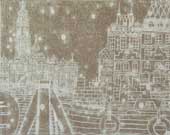
Amsterdam by Night
|
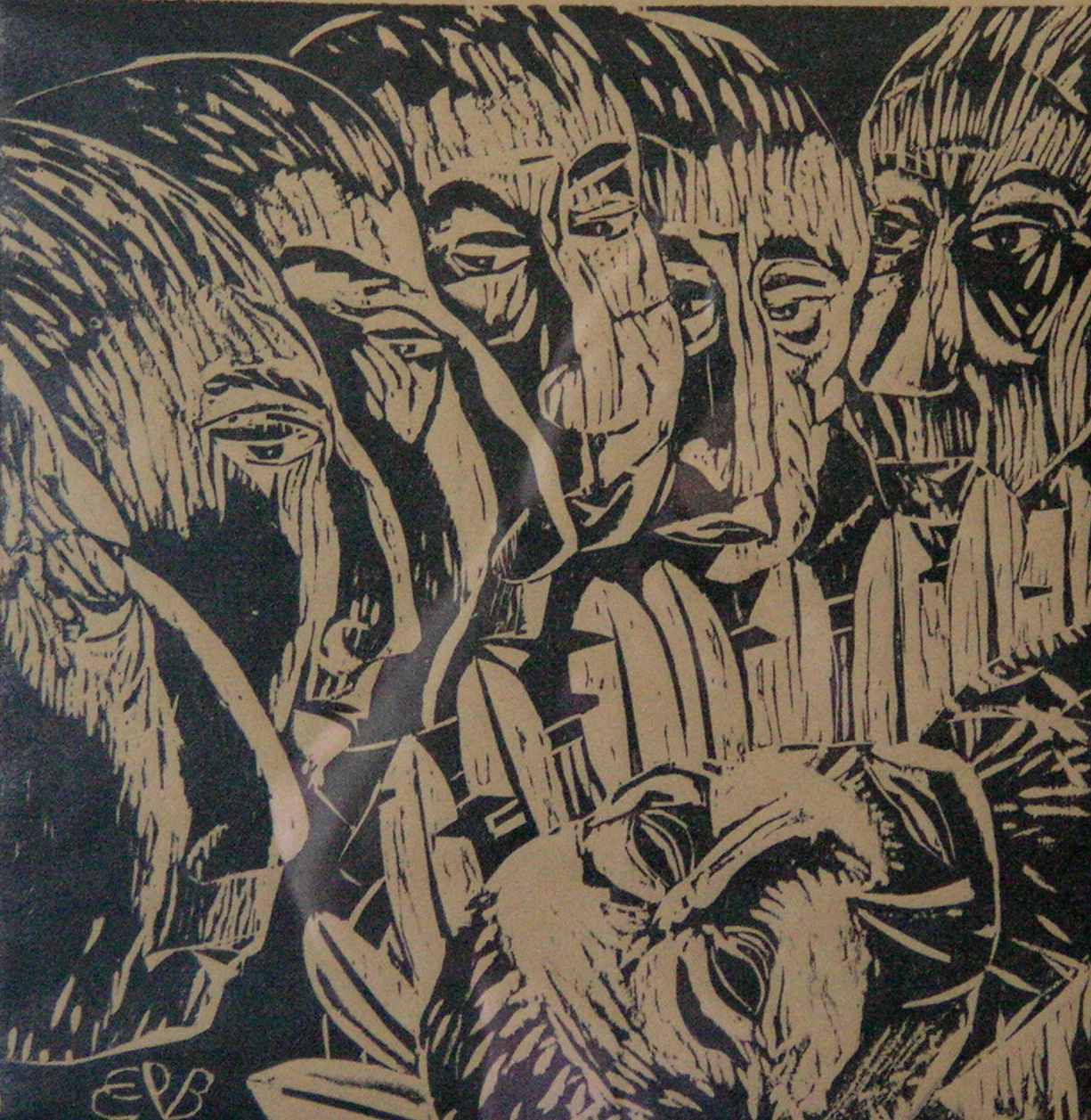
Death of White Feather
|
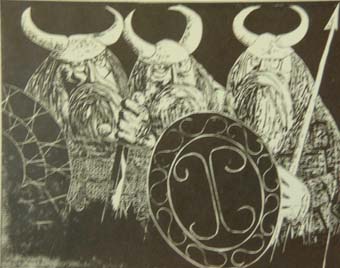
Vikings
|
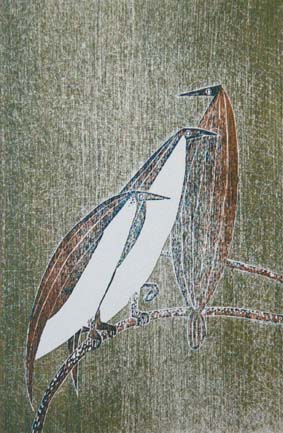
Tropical Birds
|

Trout Dance
|

Ice Fishers
|
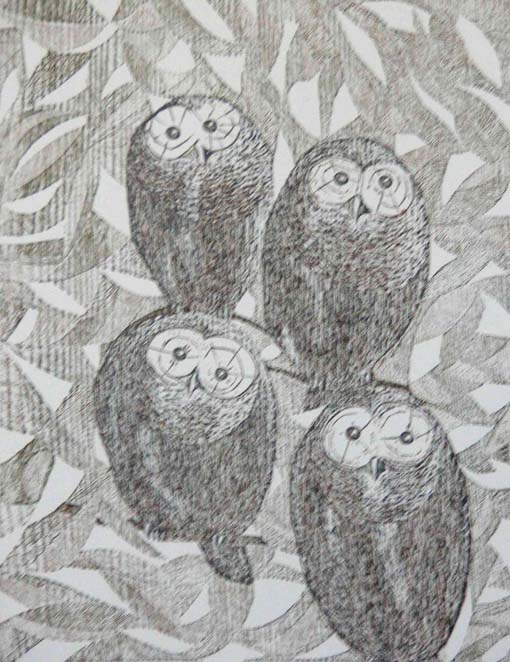
Barred Owls
|
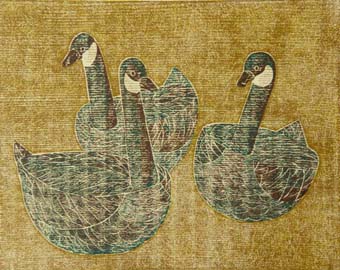
Decoys
|

Tranquil Water
|